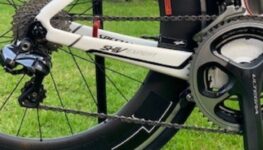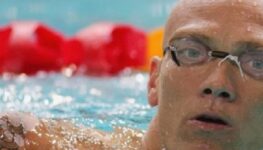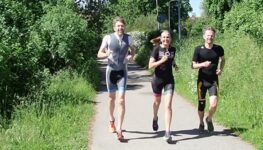Aches and pains ARE part of the process
Podcast by Joel Filliol and Paul Westwood
This week we go back to Joel Filliol, he is joined by his team physio to discuss athletes adaptation to training.
In this episode, they are specifically addressing athletes perceived bodily resilience and belief – discussing how aches and pains ARE part of the process and AREN’T necessarily the onset of an injury.
You all know we advise against believing what media companies and media “gurus” / “influencers” blurt out in articles, videos and posts (technique, threshold training, new equipment hype, etc). Either they are not “qualified” – as in they have not coached World, National or even Regional level athletes themselves – or they are thinking of the money – making things sound complicated to make sales!
In the last podcast we share with Joel, he talked about not using and believing in the reliability and validity of technology to coach his athletes. (Oh, and as a reminder, Joel coaches the current and previous few ITU World Champions – so he is “qualified”!).
This time he is discussing the problem with the over complication of, and over emphasis of mobility, strength, imbalance intervention and rehabilitation. Some well-meaning, but unexperienced (in the world of sport) health professional persuade athletes into believing they are plagued with “weaknesses” and “imbalances” and could be on the verge of serious injury!
Aches and pains should be expected
Aches and pains should be welcomed as a sign of achievement, both following a race or after introducing a new feature to training. The trick is to assess whether they are associated with race effort, the addition of a new training stimuli * or because of overload somewhere else in life.
* even with the addition of a new training stimuli, you should only ache after the first and possibly second session, after that your body should have adapted.
The simple message here: don’t immediately think you are injured if you get an ache or pain, and don’t let it fester in your mind that you are weak or lopsided! Tell us ASAP so we can modify training load.
As a bonus tip to you try to be as mobile as possible. Sit for limited periods, set up standing desks, sit on the floor every now and then rather than comfy chairs, etc. Don’t let your body seize up from prolonged period with 90° bends in the knees and hips – you’ll run better for opening and closing them more to their full range of motion!
Believe in your body, they have evolved over millions of years to cope with physical activity and are not as fragile as some people make out. When things tighten up and ache its most likely linked to things other than training; ie inactivity!



